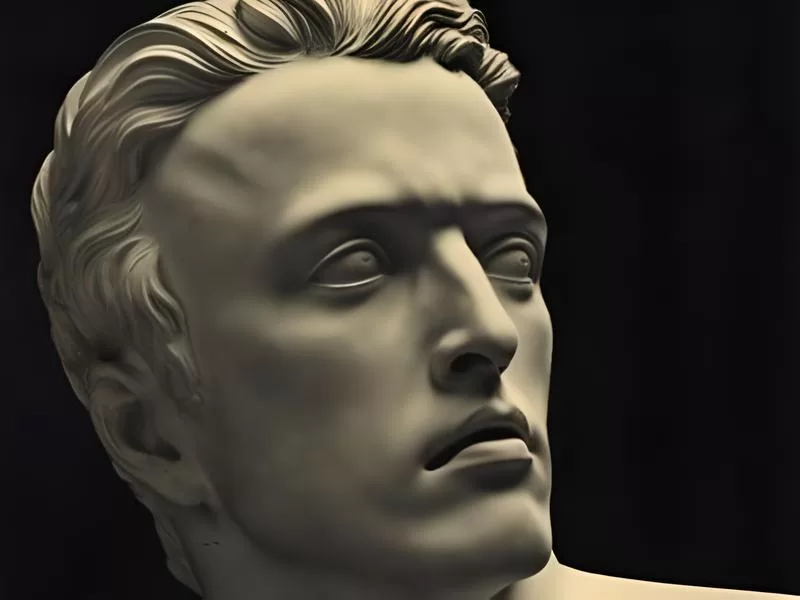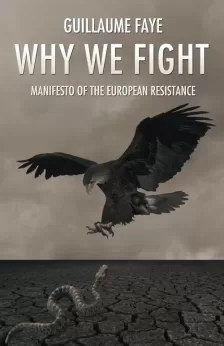It has been said that the eyes are the windows to the soul. But are they also the windows to the past? Can we not see the long line of our ancestors within the gaze of a newborn, who has set his or her eyes on the proud parents for the first time? In the clearness of a baby’s bright blue eyes, we can see the great seas where the drakkars of the Norsemen, and before them the Roman and Greek galleys, used to sail hundreds of generations ago. We can see the clear blue skies penetrated by the majestic mountains under which the Slavic and Germanic peoples once established their communities.
Today, the descendants of those peoples are hiking on the very same mountains and climbing to their peaks, the great silent witnesses of the historical developments of their nations. Once it was believed that all kinds of mythological beings, and even gods, reside in the great wilderness of the mountain ranges, from the Slovenian Alps, where Goldhorn — a white chamois buck with golden horns — used to graze, to Mount Olympus, the home of the Greek gods. Such legends are found in different European folklores and are some of the first tales that stir up the imagination of young children. That is, if their parents have enough sense to not just leave their upbringing to the poisonous entertainment industry. Even we can be carried away when we find ourselves within the embrace of the great outdoors, and maybe we can stumble upon an old dwarf or an elf that will tell us a great and ancient tale from the days gone by when the land was young and strong and when our forefathers still worshipped the old gods.
Can we not see the storms rising in the grey eyes of an elderly man recalling the days of his youth? The pains and the joys of life form into stories that he gladly shares with his descendants, throwing in a piece of advice or two, and a moral lesson, gained from his experiences. In the eyes of an old, withered man, we can still notice the flash of youthful vigor for a moment as he is aroused by the distant memories of the past. In the contemplating eyes of an infant who is observing some object for the first time, or in the eyes of a young child who is attentively listening to the ancient legends about gods, heroes and monsters, we can detect for a moment the seriousness of an old wise scholar.
In the brown-eyed, clear look of a youngling, we can notice the old autumn leaves dancing in the wind before they fall to their final resting place, covering the ground of the forests in which his or her ancestors once hunted or collected firewood. Today, we may return to those woods to find solace from the stress and the noise of urban life. The old leaves crackle beneath our feet, and the air is filled with the scent of the trees calming our souls, having the same effect on us as it once had on the people from whom we are descended. In the deep brown eyes of an old man, we can see the soil on which his fathers worked or from which the wheat that would feed him and his family would grow every season.
In the green eyes of a playful boy or girl, we can imagine the green pastures of the European countryside bursting with life or the first leaves of spring growing and stretching towards the warmness of the sun. How many people have walked upon those green fields? Did any battles and heroic acts take place there throughout the bloody history of the old world? The grass grows over the forgotten graves.
Hidden beneath the inquiring gaze of a youngster exploring his surroundings lies the curiosity of his race. The same curiosity that drove forward those people determined to engage in constant battle with the laws of physics and with their own capabilities. A thoughtful expression will appear on his young face when he listens to stories about the great accomplishments of the explorers, warriors and scientists who belong to the same civilization. They are the past and he is the future. But the future must rely on the past. It must learn from the past. The traditions and cultural norms of our folk are a compass that shows us the right direction when we find ourselves lost in unknown waters. They are the light that brightens the dark road before us. Can we not hear the distant voice in our blood, the voice of our ancestors? Can we not see them in the eyes and in the faces of our children, of the new generation?
The blood is strong. The genes of our ancestors are passed on to our descendants, as long as we are aware of the responsibility to carry on the long line of our people and of our duty to keep it unspoiled. We may be individuals with free will, but a lot of our behavior, our taste, and our preferences are determined by our genes, by the traits that we have inherited from the long line of our forebearers. The bond of blood and soil is also strong. From the misty beginnings of our history, endowed with different myths, we have been inspired and shaped by the vast natural surroundings of our continent, our true holy land. Our national cultures, customs and symbols reflect the rich landscape and wildlife of Europe. Thus, our common racial soul is manifested in various ways.
Blue eyes as bright as the sky and as clear as the mountain lakes. Green eyes glittering as the grass covered in morning dew and vivid as the meadows in spring. Brown eyes as dark as the fertile soil and as firm as the oakwood. Hazel eyes, calm as the autumn leaves bathing in the last rays of the setting sun. Grey eyes, intense as the stormy clouds or serene as the stonewalls by the old country roads. These are the eyes of Europe. Some eyes are shut forever while others are opened for the first time. But Europe endures, for Europe is not only her lakes, rivers, fields, forests, mountains and coasts. Above all, Europe is her peoples. And among her peoples, those remain who are still loyal to her. They are those who wholeheartedly agree with the sentiment that Faramir from Tolkien’s The Lord of the Rings expresses in the second book, The Two Towers, and may even be inspired by it:
I do not love the bright sword for its sharpness, nor the arrow for its swiftness, nor the warrior for his glory. I love only that which they defend: the city of the Men of Númenor; and I would have her loved for her memory, her ancientry, her beauty, and her present wisdom. Not feared, save as men may fear the dignity of a man, old and wise.
The whisper within their hearts is getting stronger. Will it burst into a battlecry while the blue, brown, grey and green eyes are watching as their home is being invaded, looted and destroyed? The long line of ancestors is watching through those eyes. Europe is watching her own suffering. She sees the smiles of those who have betrayed her. She sees the arrogance on the dark faces of the invaders. But there is also determination and sternness in the faces of her sons and daughters. They look across the border and see an ally, a friend, even a brother, where once an adversary stood. Alliances are being forged by the men and women who still stand among the spiritual — and sometimes physical — ruins of Western civilization. They are the “Diamonds in the dust,” as Ian Stuart Donaldson, the frontman of the band Skrewdriver, the pioneers of “Rock Against Communism,” sang in one of his songs.
Those blue, brown, grey or green eyes that were passed down to us in our genes from our descendants have looked upon wonderful and terrible sights. Some may have marveled upon the great works of art and architecture before they were eaten away by the slow decay of time. Some may have looked upon mighty fortresses and castles before they became ruins, destroyed in wars and battles that drenched the land of Europe with the blood of her sons. Some have seen the horrors of wars before the age of modern warfare when men slaughtered each other on battlefields with swords, axes and their bare hands. For some, those scenes of blood and carnage were the last thing they saw on this Earth. Some have witnessed the progress of warfare first-hand, as the air was polluted with poison gas and enemy bombs reduced their ranks. But many have also seen the great natural world before the spread of urban areas and concrete jungles. Some have lived thousands of years ago when beasts now long extinct still roamed in the forests and plains of our common homeland.
Today, we are the ones looking through those eyes, and tomorrow our posterity will be watching with the same eyes the world that we will leave to them. Will it be a world of decay and spiritual, cultural and physical poverty and misery? Or will the future eyes of Europe look upon the world that has been rebuilt and reborn? The world that will rise on the ruins of false morality and liberal demagoguery? The world in which the present will reconnect with the past as it will march into the future? The world in which the wisdom, the beauty and the legacy of our “city of the men of Númenor” will be well secured and built upon? We cannot foresee the final outcome of the current turbulent and dark times and developments. But we can strive with the means within our reach to make such a world a reality for our progeny. Our chief concern should not be if, at the moment, the odds are in our favor or against us, but that we stay loyal to ourselves, to our roots, to our blood, to our ancestors and our heirs. We do what is within our powers to defend and preserve that which is noble and true in this age of lies, dirt and decay: our heritage, the spirit of our peoples, the roots from which we sprang, and the wisdom of our distant ancestors. We do not know what may happen in the future. But we do know that as long as the blue, green, grey and brown eyes in which Europe resides look upon this world, hope remains.







